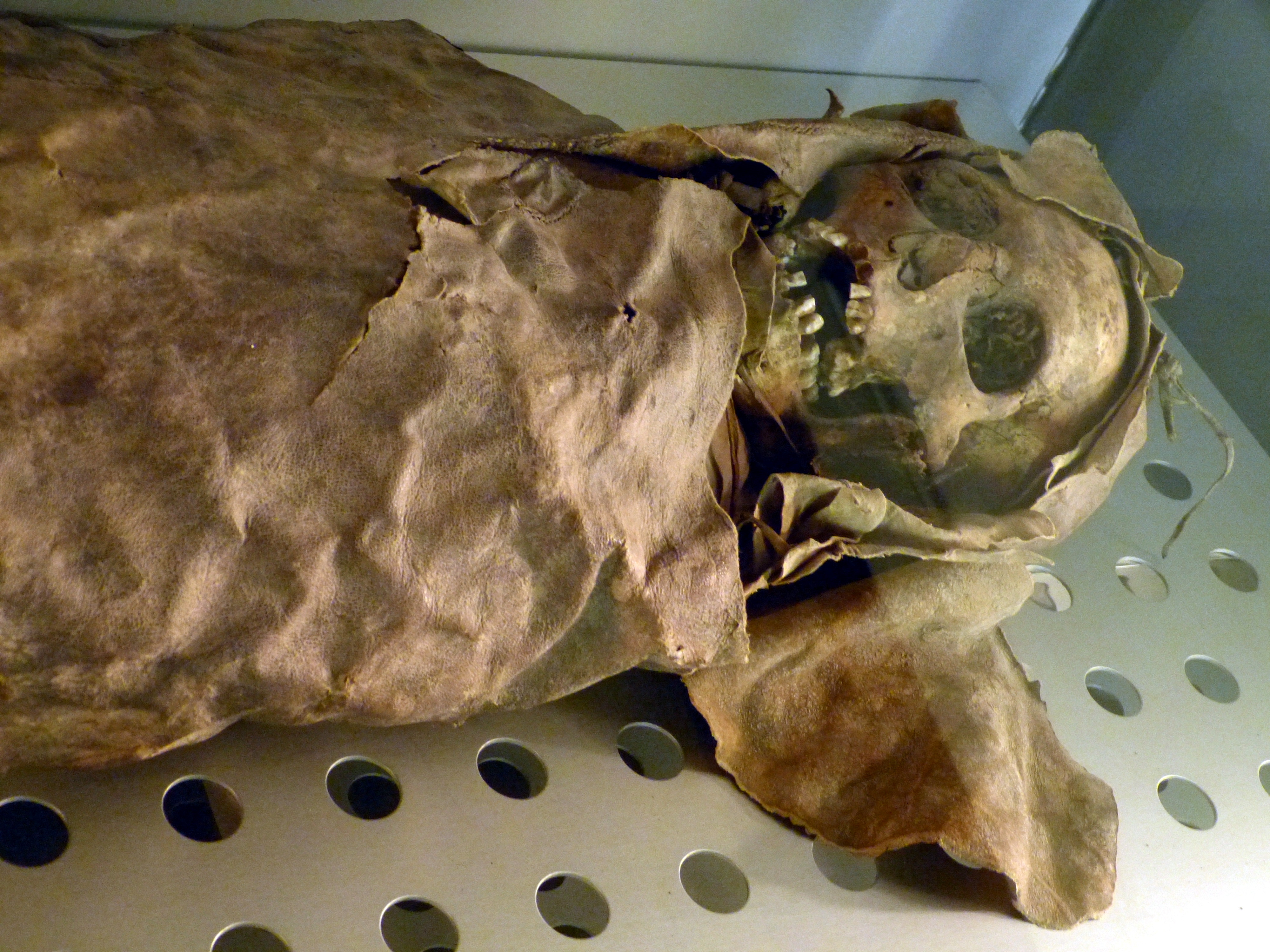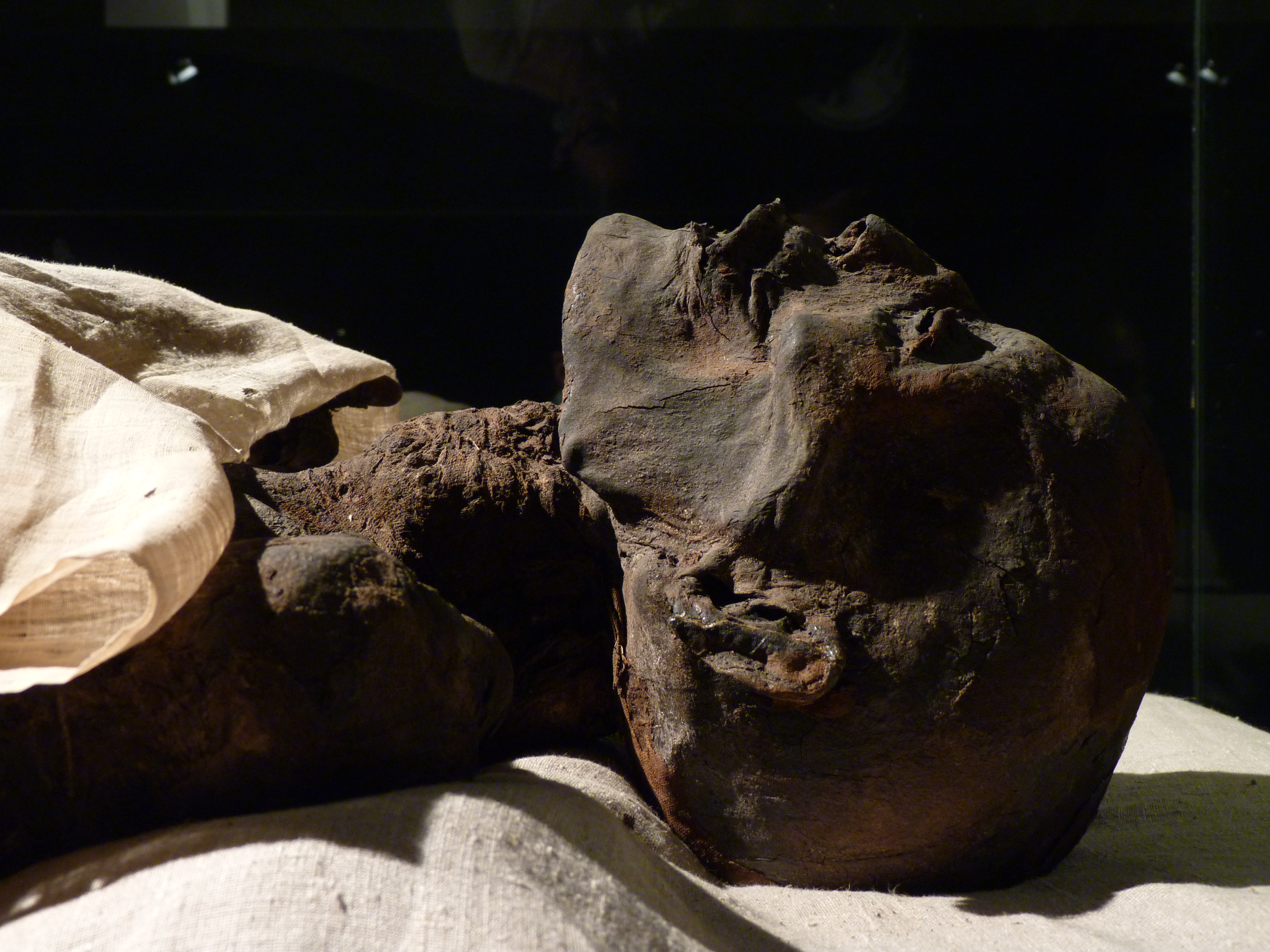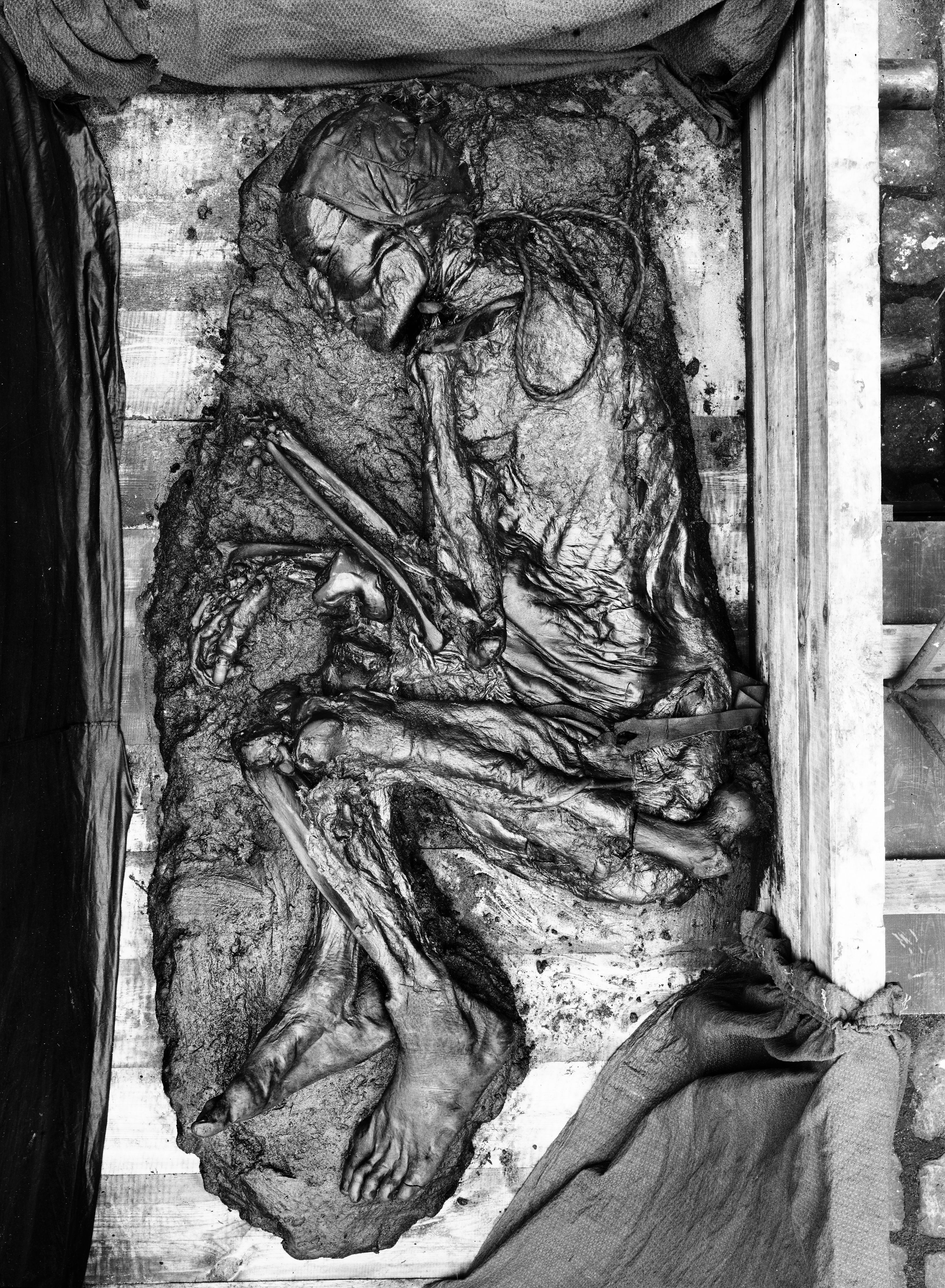|
Mummy Of San Andrés
The Mummy of San Andrés is a human mummy belonging to the Guanche culture, who were the ancient inhabitants of the Canary Islands, Spain. It is one of the best preserved Guanche mummies, and is one of the few that has a proper name, ''Mummy of San Andrés''. The appellation refers to the place where the male specimen was discovered, similar to how the mummies of the swamps in northern Europe were named after local toponyms (Lindow Man, Grauballe Man and Tollund Man, among others). The mummy is a male of about 25 to 30 years partially covered with goatskin with 6 strips that surround it. It was found in a cave in a ravine outside the village of San Andrés. The mummy was found in the Anaga massif, an area on the island of Tenerife that is rich in archaeological finds. It is thought that the mummy might have been that of a Mencey (aboriginal king), or a leading figure in Guanche society of the time. The exact year of the mummy's discovery is unknown. The specimen was kept at th ... [...More Info...] [...Related Items...] OR: [Wikipedia] [Google] [Baidu] |
MNH - Mumie Mann 1
MNH or mnh may refer to: * Museo Nacional de Historia, a national museum of Mexico * MNH, the IATA code for Rustaq Airport, Oman * MNH, the Indian Railways station code for Munsirhat railway station, West Bengal, India * mnh, the ISO 639-3 code for Mono language (Congo), Democratic Republic of the Congo {{Disambiguation ... [...More Info...] [...Related Items...] OR: [Wikipedia] [Google] [Baidu] |
Anaga
Macizo de Anaga is a mountain range in the northeastern part of the island of Tenerife in the Canary Islands. The highest point is 1,024 m (Cruz de Taborno). It stretches from the Punta de Anaga in the northeast to Cruz del Carmen in the southwest. Anaga features the mountain peaks of Bichuelo, Anambro, Chinobre, Pico Limante, Cruz de Taborno and Cruz del Carmen. The mountains were formed by a volcanic eruption about 7 to 9 million years ago making it the oldest part of the island. Since 1987 it has been protected as a "natural park", reclassified as "rural park" in 1994. Since 2015 it is also an UNESCO Biosphere Reserve and is the place that has the largest number of endemic species in Europe. It is a remote and wild area characterized by humid forests, such as ''laurisilva''. Native plant species include '' Ceropegia dichotoma'', '' Ceropegia fusca'' and ''Echium virescens''. The Macizo de Anaga is also rich in archaeological finds, among which is the Mummy of San Andrés bel ... [...More Info...] [...Related Items...] OR: [Wikipedia] [Google] [Baidu] |
Guanche Mummies Of Necochea
The Guanche mummies of Necochea are two mummies of Guanche individuals, who were the ancient Berber autochthones of the Canary Islands. The specimens are currently on display at the Museo de la Naturaleza y el Hombre in Santa Cruz de Tenerife. The Necochea mummies are so-called because they were first exhibited in 2003 at the Museo Civil de Ciencias Naturales in Necochea, Province of Buenos Aires, Argentina. These two individuals, male and female respectively, the woman would have between 20 and 24 years and is wrapped in a bundle of pigskin. The other mummy is a man between 25 and 29 years and has a special feature, its position with legs bent with his heels against his buttocks. According to experts, the mummies date back to the ninth century. The exact place on the island where the mummies come from is not known. It is believed that one of the mummies may even come from a burial cave in the ''Barranco de Guayonje'' in Tacoronte and the other mummy of La Orotava, but according ... [...More Info...] [...Related Items...] OR: [Wikipedia] [Google] [Baidu] |
Momia Guanche Museo Santa Cruz 27-07
Shilajit ( sa, शिलाजीत in Urdu "Conqueror of mountains, Conqueror of the Rocks, Destroyer of Weakness") or Mumijo is a blackish-brown powder or an exudate from high mountain rocks, often found in the Himalayas, Karakoram, Gilgit-Baltistan - Pakistan, Nepal, Bhutan, Russia, Central Asia, Iran, Mongolia and in the south of Peru, where it is called Andean Shilajit. Also known as μούμια (in Greek), Mumiyo (in Russian), Brag-shun or Barakhshin (means "oil of the mountains" in South Siberian region of the Sayano-Altai Mountains, Khakassia, Buryatia, Mongolia), Rock sap or Rock juice (in Tibet, Central Asia, Himalaya, Pamir and Altai), Marathi or Gujarati (in Hindi), شلاجیت ( in Urdu ) Asphalt (in English), Silajita, Silajatu (in Bengali), Hajarul-Musa or Araq-al-jibal (in Arabic), Myemu, Moomiaii or Mumnaei (in Persian), Mumie (in German), Mineral Pitch, Jew’s Pitch, Mineral Wax, Kao-tun (blood of the mountain in Birma), Tasmay and Slag (China), "Bles ... [...More Info...] [...Related Items...] OR: [Wikipedia] [Google] [Baidu] |
Santa Cruz De Tenerife
Santa Cruz de Tenerife, commonly abbreviated as Santa Cruz (), is a city, the capital of the island of Tenerife, Province of Santa Cruz de Tenerife, and capital of the Canary Islands. Santa Cruz has a population of 206,593 (2013) within its administrative limits.Instituto Canario de Estadística , population The of Santa Cruz extends beyond the city limits with a population of 507,306 and 538,000 within urban area. It is the second largest city in the Canary Islands and the main city on the island of |
Museo De La Naturaleza Y El Hombre
Museo may refer to: * Museo, 2018 Mexican drama heist film *Museo (Naples Metro) Museo is a station on line 1 of the Naples Metro. It was opened on 5 April 2001 as the eastern terminus of the section of the line between Vanvitelli and Museo. On 27 March 2002 the line was extended to Dante Dante Alighieri (; – 14 Se ..., station on line 1 of the Naples Metro * Museo, Seville, neighborhood of Seville, Spain {{disambiguation ... [...More Info...] [...Related Items...] OR: [Wikipedia] [Google] [Baidu] |
Mencey
The Guanches were the indigenous peoples, indigenous inhabitants of the Canary Islands in the Atlantic Ocean some west of Africa. It is believed that they may have arrived on the archipelago some time in the first millennium BCE. The Guanches were the only native people known to have lived in the Macaronesian archipelago region before the arrival of Europeans, as there is no accepted evidence that the other Macaronesian archipelagos (the Cape Verde Islands, Madeira and the Azores) were inhabited. After the Conquest of the Canary Islands, Spanish conquest of the Canaries starting in the early 15th century, many natives were wiped out by the Spanish settlers while others interbred with the settler population, although elements of their culture survive within Canarian customs and traditions, such as Silbo Gomero language, Silbo (the whistled language of La Gomera Island). In 2017, the first genome-wide data from the Guanches confirmed a North Africa, North African origin and tha ... [...More Info...] [...Related Items...] OR: [Wikipedia] [Google] [Baidu] |
Archaeological
Archaeology or archeology is the scientific study of human activity through the recovery and analysis of material culture. The archaeological record consists of artifacts, architecture, biofacts or ecofacts, sites, and cultural landscapes. Archaeology can be considered both a social science and a branch of the humanities. It is usually considered an independent academic discipline, but may also be classified as part of anthropology (in North America – the four-field approach), history or geography. Archaeologists study human prehistory and history, from the development of the first stone tools at Lomekwi in East Africa 3.3 million years ago up until recent decades. Archaeology is distinct from palaeontology, which is the study of fossil remains. Archaeology is particularly important for learning about prehistoric societies, for which, by definition, there are no written records. Prehistory includes over 99% of the human past, from the Paleolithic until the adve ... [...More Info...] [...Related Items...] OR: [Wikipedia] [Google] [Baidu] |
Tenerife
Tenerife (; ; formerly spelled ''Teneriffe'') is the largest and most populous island of the Canary Islands. It is home to 43% of the total population of the Archipelago, archipelago. With a land area of and a population of 978,100 inhabitants as of January 2022, it is also the most populous island of Spain and of Macaronesia. Approximately five million tourists visit Tenerife each year; it is the most visited island in the archipelago. It is one of the most important tourist destinations in Spain and the world, hosting one of the world's largest carnivals, the Carnival of Santa Cruz de Tenerife. The capital of the island, , is also the seat of the island council (). That city and are the co-capitals of the autonomous community of the Canary Islands The Canary Islands (; es, Canarias, ), also known informally as the Canaries, are a Spanish autonomous community and archipelago in the Atlantic Ocean, in Macaronesia. At their closest point to the African mainland, they ... [...More Info...] [...Related Items...] OR: [Wikipedia] [Google] [Baidu] |
San Andrés, Santa Cruz De Tenerife
San Andrés is a village located on the island of Tenerife in the Canary Islands (Spain). It is located on the coast, at the foot of the Anaga mountains, northeast of the capital city Santa Cruz de Tenerife. It is administratively part of the municipality of Santa Cruz de Tenerife. San Andrés is one of the oldest villages of Canary Islands, and was founded around 1498. Local names San Andrés (English translation ' Saint Andrew') has had numerous names throughout its history. The Guanches called the two valleys that make up San Andrés "Abicor" and "Ibaute", being current and valleys of Cercado de Las Huertas respectively. According to some scholars "Abicor" was associated with fig trees, while others are similar to African voices to refer to the hives. Already after the arrival of the Spaniards, the valley became known in the early years of the Higueras Valley (by the abundance of them), Valle de Las Higueras and Los Sauces, Valle de Salazar (by the owners dated to the are ... [...More Info...] [...Related Items...] OR: [Wikipedia] [Google] [Baidu] |
Mummy
A mummy is a dead human or an animal whose soft tissues and organs have been preserved by either intentional or accidental exposure to chemicals, extreme cold, very low humidity, or lack of air, so that the recovered body does not decay further if kept in cool and dry conditions. Some authorities restrict the use of the term to bodies deliberately embalmed with chemicals, but the use of the word to cover accidentally desiccated bodies goes back to at least 1615 AD (see the section Etymology and meaning). Mummies of humans and animals have been found on every continent, both as a result of natural preservation through unusual conditions, and as cultural artifacts. Over one million animal mummies have been found in Egypt, many of which are cats. Many of the Egyptian animal mummies are sacred ibis, and radiocarbon dating suggests the Egyptian Ibis mummies that have been analyzed were from time frame that falls between approximately 450 and 250 BC. In addition to the mumm ... [...More Info...] [...Related Items...] OR: [Wikipedia] [Google] [Baidu] |
Tollund Man
The Tollund Man (died 405–380 BC) is a naturally mummified corpse of a man who lived during the 5th century BC, during the period characterised in Scandinavia as the Pre-Roman Iron Age. He was found in 1950, preserved as a bog body, near Silkeborg on the Jutland peninsula in Denmark. The man's physical features were so well preserved that he was mistaken for a recent murder victim. Twelve years before his discovery, another bog body, Elling Woman, was found in the same bog. The cause of death has been determined as by hanging. Scholars believe the man was a human sacrifice, rather than an executed criminal, because of the arranged position of his body, and his eyes and mouth being closed.Hart, Edward, dir. "Ghosts of Murdered Kings". NOVA. Prod. Edward Hart and Dan McCabe, PBS, 29 January 2014 Discovery On 8 May 1950, peat cutters Viggo and Emil Hojgaard discovered a corpse in the peat layer of the Bjældskovdal peat bog, west of Silkeborg, Denmark, which was so well pre ... [...More Info...] [...Related Items...] OR: [Wikipedia] [Google] [Baidu] |





.jpg)



